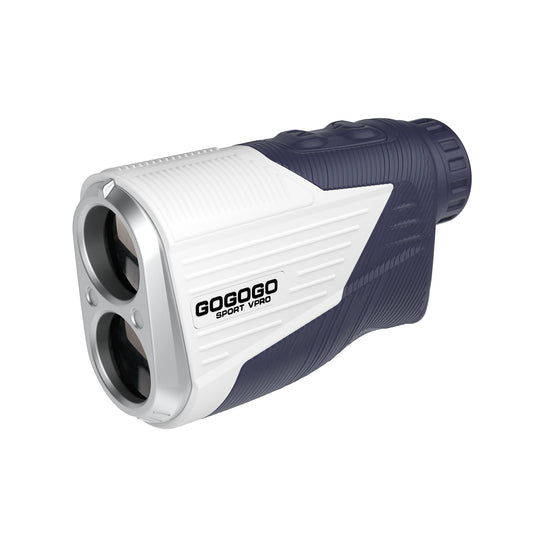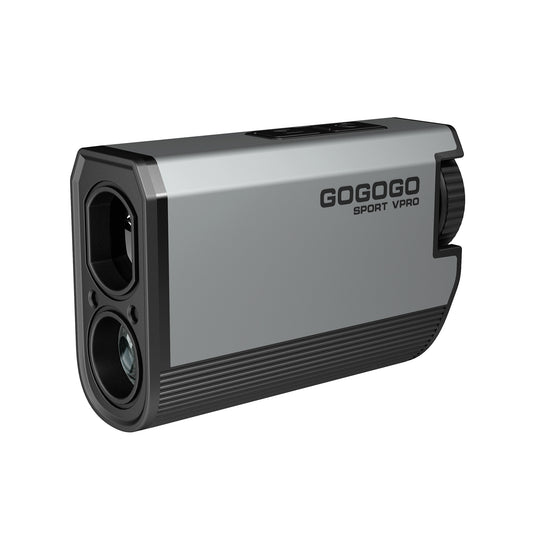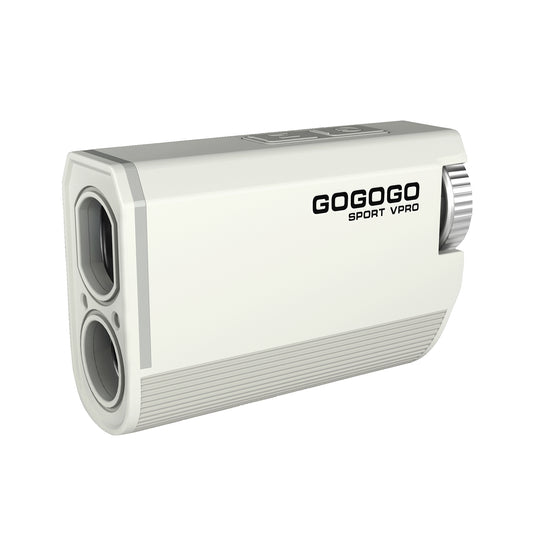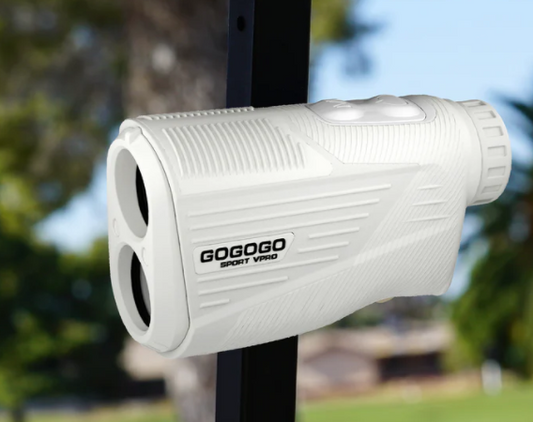For novice golfers eager to elevate their game, the allure of high-end golf rangefinders is undeniable. These sophisticated devices promise precise distance measurements, empowering players to make more informed club selections and execute strategic shots. However, like any advanced tool, the learning curve associated with mastering these high-tech aids can appear steep to beginners. This article delves into the specific challenges that newcomers might encounter when adopting high-end golf rangefinders and explores effective strategies to overcome these hurdles.

Challenge 1: The Learning Difficulty Stemming from Functional Complexity
Modern high-end golf rangefinders often integrate a multitude of complex functionalities, which, while enhancing their utility, can initially pose a significant learning burden for beginners:
1. Slope Compensation Functionality
This feature adjusts the measured distance to account for elevation changes between the player and the target. Beginners must not only grasp the fundamental principle of how slope affects the actual playing distance but also learn to interpret the compensated yardage provided by the rangefinder and translate it into appropriate club selection and swing adjustments. This necessitates a foundational understanding of golf ballistics and the impact of terrain.
2. GPS Integration Capabilities
Some advanced rangefinders incorporate GPS technology, offering detailed course maps, distances to hazards, and layup points. Novice golfers need to become proficient in navigating these digital maps, understanding the various icons and data points presented, and quickly integrating this information into their pre-shot routine. For those unfamiliar with electronic map interfaces, this can represent a considerable initial challenge.
3. Advanced Target Acquisition Systems
To precisely lock onto the flagstick amidst other background objects, high-end rangefinders often feature sophisticated target acquisition systems, such as pin-seeking modes with vibration feedback or visual indicators. Beginners must learn the nuances of these different modes, mastering the techniques for quickly and accurately locking onto the intended target, often requiring a degree of hand-eye coordination and familiarity with the device's aiming reticle.

Challenge 2: The Adaptation Process to Operational Habits
Beyond comprehending the array of features, beginners must also adapt to the specific operational habits associated with different types of rangefinders:
1. Aiming and Measurement Techniques for Laser Rangefinders
Laser rangefinders require users to visually align a reticle within the eyepiece with the target and then press a button to initiate the measurement. For novices, achieving a steady aim, particularly when the target is small or distant, and accurately focusing the device, can take practice. The ability to quickly acquire the target and interpret the displayed distance requires a degree of dexterity and familiarity with the device's ergonomics.
2. Interface Navigation and Function Switching for GPS Rangefinders
GPS-enabled rangefinders typically feature multi-level menus and various functional screens. Beginners need to invest time in familiarizing themselves with the interface layout, understanding the purpose of different icons and settings, and efficiently switching between various functionalities, such as viewing course maps, checking distances to hazards, or accessing scoring features. Hesitation or confusion during operation on the course can lead to delays and frustration.
Challenge 3: Overcoming Psychological Barriers
In addition to the technical and operational hurdles, beginners might also encounter certain psychological barriers when adopting high-end rangefinders:
1. Developing Reliance on Technology
Novice golfers might worry about becoming overly dependent on the precise distances provided by the rangefinder, potentially hindering the development of their own innate distance judgment skills. This apprehension can lead to a feeling of uncertainty when playing without the device and may impede their long-term golfing intuition. Striking a balance between utilizing technology and cultivating one's own feel for distance is crucial.
2. Psychological Pressure of Using a Rangefinder in Competition
The prospect of using a rangefinder during formal competitions can introduce additional psychological pressure for beginners. They might fear inadvertently violating rules due to unfamiliarity with the device's legal usage or worry about slowing down the pace of play while taking measurements, potentially impacting their mental state and overall performance. Understanding the rules governing rangefinder use in competition is essential to alleviate this anxiety.

Challenge 4: The Importance of Learning Resources and Practice
To effectively navigate the learning curve associated with high-end golf rangefinders, beginners should proactively leverage available learning resources and engage in consistent practice:
1. Reading User Manuals and Watching Tutorial Videos
Thoroughly reviewing the manufacturer's user manual is the foundational step in understanding the specific features and operational procedures of the rangefinder. Many brands also offer comprehensive tutorial videos that provide visual demonstrations, facilitating a quicker and more intuitive understanding of the device's capabilities.
2. Engaging in Repetitive Practice on the Driving Range
The driving range provides an ideal environment for beginners to familiarize themselves with their rangefinder. Practicing measuring targets at various distances and under different simulated conditions allows them to become comfortable with the device's operation, experiment with different modes, and develop a consistent measurement routine.
3. Participating in Professional Training or Consulting Experienced Golfers
Enrolling in golf technology workshops or seeking guidance from experienced golfers who are proficient in using rangefinders can significantly accelerate the learning process. These resources can provide valuable insights, practical tips, and solutions to common challenges faced by beginners.
Challenge 5: Learning Difficulty Variations Among Different Rangefinder Types
The learning curve can also vary depending on the specific type of high-end rangefinder being used:
1. Laser Rangefinders
- Advantages: Offer highly accurate line-of-sight distance measurements to the target, making them ideal for golfers prioritizing precision.
- Learning Difficulty: The core operation is relatively straightforward, primarily involving aiming at the target and pressing a button. The main challenge lies in developing a steady hand for accurate aiming and quickly interpreting the displayed distance, particularly when dealing with small or distant targets.
2. GPS Rangefinders
- Advantages: Provide comprehensive course information, including detailed layouts, distances to hazards, and layup points, offering a broader perspective of the playing field.
- Learning Difficulty: Requires familiarity with the device's interface navigation and the interpretation of digital map data. Beginners unfamiliar with electronic devices and map interfaces may find the initial learning phase more demanding. Understanding the various icons and data points presented on the screen also requires a degree of cognitive effort.

In Conclusion, while the sophisticated functionalities and unique operational demands of high-end golf rangefinders do present a learning curve for beginners, this challenge is far from insurmountable. By diligently utilizing available learning resources, committing to consistent practice on the range, and selecting a rangefinder type that aligns with their technical aptitude and learning style, novice golfers can effectively master these advanced tools. The key lies in maintaining patience, adopting a proactive learning approach, and gradually integrating the rangefinder into their pre-shot routine to ultimately enhance their decision-making and improve their overall golfing performance. The initial investment in time and effort will undoubtedly yield significant benefits in terms of accuracy, confidence, and enjoyment on the course.








![[2025] The Ultimate Guide to Pinseeker Rangefinders for Golfers](http://gogogosport.com/cdn/shop/articles/gogogo_sport_vpro_pinseeker_rangefinder.png?v=1757993796&width=533)